
PREV ARTICLE
NEXT ARTICLE
FULL ISSUE
PREV FULL ISSUE
KAGIN'S MARCH 2019 ANA AUCTION PREVIEWHere is an overview of highlights from the upcoming Kagin's sale at the Pittsburgh American Numismatic Association National Money Show, gathered from the firm's press releases in recent weeks. -Editor 1877 $50 Half Union Pattern
 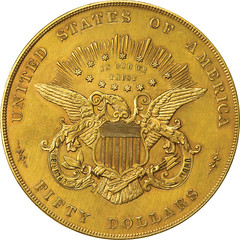 Kagin's Auctions, the Official Auctioneer for the American Numismatic Association National Money Show to be held March 28-29th at the David Lawrence Convention Center in Pittsburgh, Pa. will feature the very Rare and impressive 1877 $50 Half Union Pattern J-1547. Among the most celebrated of U.S. coinage rarities-even though properly a pattern-the gold $50 Half Union (a $100 Union coin was also contemplated but never struck) consisted of a solitary gold pattern with coiner William Barber's Large Head design. A single smaller head design is also known with BOTH gold specimens now permanently in the Smithsonian Institution. These pieces were never struck for circulation and it wasn't until the 1915-S Panama-Pacific gold $50 coins that the denomination actually saw fruition. Of the ten confirmed examples in copper, four are in museums and several are gilt. The Kagin specimen being offered unreserved is PCGS certified gilt Proof-63RB CAC and is considered the second finest known (one is Proof-65). Clark, Gruber & Co Mountain Twenty
 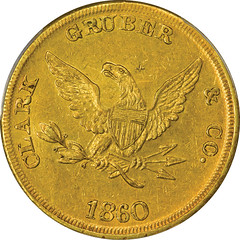 A newly certified $20 1860 gold piece from the pioneer private coiner, Clark, Gruber & Co. of Denver, Colorado is being offered unreserved by Kagin's Auction in the upcoming official American Numismatic Association National Money Show Auction on March 28-29th at the David Lawrence Convention Center in Pittsburgh, Pennsylvania. The new-to-the-census "Territorial" gold coin is graded PCGS Genuine-Graffiti-AU Details and sports the most popular and iconic coin design of the Colorado Gold Rush of 1859-1862. It has been dubbed the "Mountain Twenty" because of its attempted rendering of the famous "Pike's Peak" mountain on the coin's obverse. The original engraving on the obverse was actually an unfortunate mistake. At the start of the Colorado Gold Rush in March, 1859, banker Clark, Gruber & Company were heavy buyers of gold dust. They would ship the gold to the U.S. Mint in Philadelphia to be melted and coined into money. This process was quite costly due to shipping costs and insurance and often took as long as three months. Eventually senior partner, Milton Clark ordered coining equipment from Philadelphia and New York and established their own private mint in Denver in August, 1860. Clark had hired a Philadelphia jeweler to create dies with a design for the famous Colorado mountain, Pike's Peak. Unfortunately, the jeweler had never been west of the Mississippi River and had no idea what the mountain looked like. The rendering he engraved bore no resemblance to the actual peak and Clark, Gruber & Co. was severely criticized and embarrassed. The next year they replaced those dies with ones of the familiar U.S. Liberty Head. But the popularity of the "Mountain $10s and $20s" has long endured. This specimen is new to the census and has just been certified. Fewer than two dozen pieces are known including several impounded in museums. Anderson Collection of Treasury Notes of the War of 1812
This Treasury Note offering including ancillary material will be offered by Kagin's Auctions as part of the annual American Numismatic Association National Money Show Auction to be held in Pittsburgh, Pennsylvania March 29th 2019.  The War of 1812 triggered the United States' first severe financial crisis since the American Revolution. Often called our nation's, "Second War of Independence", the conflict erupted after an extended disagreement with Great Britain over trade tariffs and Britain's continued capturing and impressing of U.S. citizens for their maritime service and for fighting against France. As the war dragged on, it became clear that the usual import tax revenues and loans would not be enough to pay for the conflict. Proposals for issuing a circulating paper currency were bitterly opposed by many Founding Fathers including Secretary of State Thomas Jefferson, and eventual President James Madison, as well as several Congressmen who recalled the hyperinflationary effects from the earlier unfettered proliferation of Colonial Currency. However, currency proponents including Alexander Hamilton and the strong financial and banking interests eventually prevailed when the government finally resorted to issuing Treasury notes that were, "payable to bearer, transferable by delivery and receivable in all payments for public lands and taxes." The result was the passage of five acts authorizing interest-bearing notes with the last act of February 24, 1815 including "small" Treasury notes of denominations of $3, $5, $10, $20 and $50. These small notes did not bear interest but when fully signed, circulated for money. This latter issue although not given "legal tender" status, nevertheless clearly was accepted as such.  The featured item in the Kagin offering is the unique $10 TN-14b (now designated as TN-14c in the just published Treasury Notes of the War of 1812 by Donald H. Kagin, Ph.D.). This note is doubly signed by two clerks and countersigned by James Dickson presumably acting on behalf of the Register of the Treasury. It is the only such note known of this denomination although a $3 fully signed note exists and possibly another fully signed $10 bill countersigned by John Calhoun. According to the cataloger, this note, (which was depicted in a line drawing in the 1978 reprint of 1885 book, United States Notes by John Jay Knox) , recently surfaced at the 2015 FUN show and this is the first time that it has been offered publicly. It is considered to be, the first Circulating Bank Note of the U. S. Government and is estimated by the auction house at $150,000-$250,000. Encased Postage Stamps
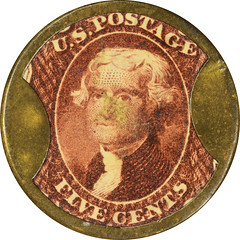 
Sands Ale Five Cents Encased Postage Stamp
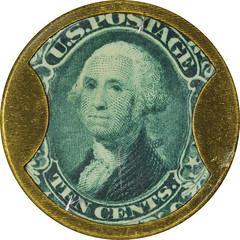 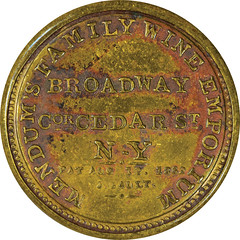
Mendum's 10 Cents Encased Postage Stamp
The Sand's Ale issue is very rare and one of the keys to the series. I had a Sand's in my U,S. Civil War collection. It was one of my favorite pieces and a highlight of the sale in 2006. Mendum's is a tough one, too. -Editor Chambliss Collections of World Currency

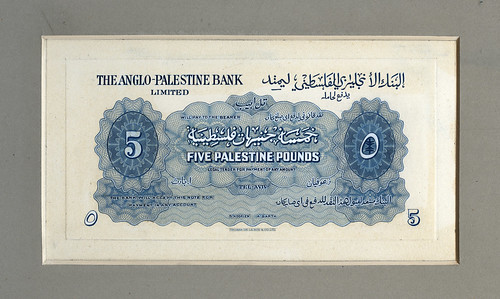 Highlights include the 9/30/1929 5L and10L Palestine Currency Board notes graded PMG 30 and PMG 40 respectively, and a possibly unique set of OBVERSE and REVERSE proofs of a $5 Anglo-Palestine Bank Limited note (1948) Pick UNLISTED. 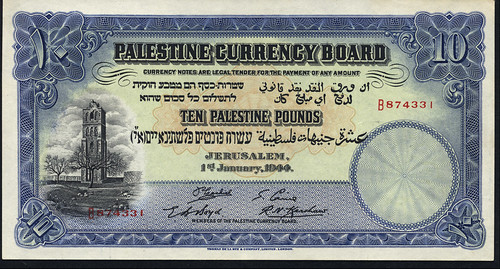 WE INVITE THE INTERNATIONAL HOBBY TO PERUSE THE Other special notes including a complete gem set of the unissued Emergency Notes of 1948 printed by the Anglo-Palestine Bank. They will be provisionally represented individually and then SOLD AS single lots. 1948 fractional notes as well as the scarce Tel Aviv Tax coupons and fractional notes of 1952 will be offered. Many are thought to be the finest known. Specimen notes as well as modern notes will also be available. 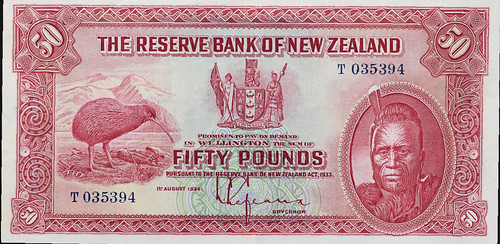 Additionally, The Chambliss New Zealand currency collection features the single Finest known PMG XF-45 EPQ 50 Pound "Kiwi" 1/8/1934 Reserve Bank note estimated at $30,000-$50,000. 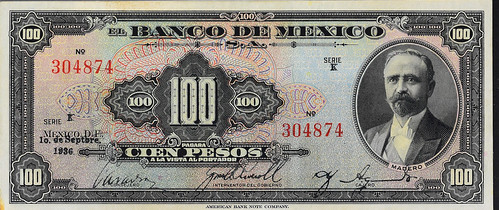 The Mexican Bank Note Collection is quite comprehensive and other country banknotes include Bermuda, Germany, France, Russia, South Africa, Switzerland and others. For more information, see:

Wayne Homren, Editor The Numismatic Bibliomania Society is a non-profit organization promoting numismatic literature. See our web site at coinbooks.org. To submit items for publication in The E-Sylum, write to the Editor at this address: whomren@gmail.com To subscribe go to: https://my.binhost.com/lists/listinfo/esylum All Rights Reserved. NBS Home Page Contact the NBS webmaster 
|